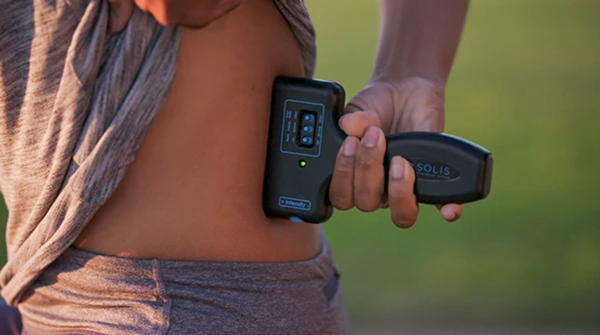
TENS units (transcutaneous electrical nerve stimulators) work by sending stimulating pulses across the skin along the sensory nerves. These stimulating pulses help prevent, or suppress, the pain signals from reaching the brain, thereby decreasing the pain.
Before using a TENS as a pain relief approach, it is important to talk with your doctor. Some therapies may not be safe or appropriate for you, even if they are of the non pharmaceutical kind. Different factors need to be considered before undergoing any treatment, including your medical condition and history.
There are many different types of TENS units available today. Most of them are lightweight, battery-powered devices a little larger than a deck of cards. They can clip to your belt, making them somewhat portable. Some devices have 2-4 leads, or wires, that clip to adhesive patches. These patches are placed on the skin over the site of the pain.
When we suffer an injury, our body naturally protects the injured area with muscle guarding, or tightening of the muscles. This response can be the start of a cycle that often causes a decreased range of motion, or immobilization. This immobilization can lead to reduced circulation, decreased blood supply, build-up of metabolic waste, and pain. Nerve receptors at the site of injury send a pain message to the spinal cord and brain. A TENS unit can help to alter this message, preventing or breaking the cycle. TENS units work by sending stimulating pulses across the skin along the sensory nerves. These stimulating pulses help prevent, or suppress, the pain signals from reaching the brain, thereby decreasing the pain. TENS units have different frequencies and impulse levels. Individuals using a TENS unit have the ability to control the intensity and pulse rate of the stimulation. It can be increased or decreased as tolerated. The TENS can be used as often as desired. The unit itself can stay in place for hours and just be turned on and off as needed. TENS units also help to stimulate our body to produce higher levels of our own natural painkiller, called endorphins. Endorphins are chemicals made by our body to reduce or prevent pain.
There are a variety of TENS unit models available in a wide range of prices. Typically, your provider gives you a referral or prescription for a TENS unit. The unit may be available through your provider’s office, a physical rehabilitation facility, or can be purchased at a medical supply store. Many insurance companies pay all but the deductible. Management of pain, both acute and chronic, can be difficult. Utilizing a TENS unit when appropriate allows for pain reduction without the potential side effects of medications. A TENS unit can be used during a physical therapy session or in the comfort of home. It is a cost-effective, non-invasive treatment of pain with proven results.
Before you buy, however, it's important to note that not all TENS units are the same. The SOLIS Pain Relief Management System has some specific and unique design features that make it more effective and easier to use. In short, there are no sticky pads or electrical cords to manage, it's completely portable and the laminar band of current makes SOLIS more precise in targeting and relief at the specific location of the pain.
Note: These units should not be placed directly over the spine, over the eyes, or on the front of the neck. Skin should always be intact. A TENS unit is contraindicated when an individual has an electrical implanted device (such as a pacemaker), cancer or pregnancy.
